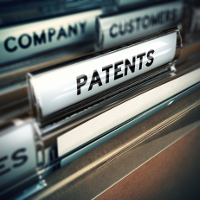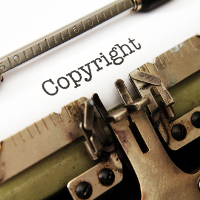Cross-posted from the Law Theories blog.
On July 24th, six major studios sued MovieTube for direct and indirect copyright infringement, trademark infringement, and unfair competition in the Southern District of New York. MovieTube is alleged to have operated twenty-nine foreign-based websites that streamed, displayed, and uploaded infringing copies of the studios’ copyrighted works. Not knowing the defendants’ true identities, the studios brought suit against the “John Does, Jane Does and/or XYZ Corporations” that allegedly operated the MovieTube sites. The district court allowed the studios to serve process on the defendants via email.
The remedies being sought by the studios have raised a few feathers. MovieTube operates out of Singapore, and the studios argue that it is “essential . . . that injunctive relief include orders directed at third parties whose services enable Defendants’ activities.” Since MovieTube relies on “domain name registries and other third-party service providers and their network of affiliates to carry out their activities,” the studios are seeking an order “requiring that: (i) registries and registrars disable the domain names used to operate the MovieTube Websites and (ii) third-party service providers cease providing services to the MovieTube Websites and Defendants in relation to the Infringing Copies.”
While some have suggested that the studios “didn’t get the memo that SOPA failed,” I think the real question is, “Who needs SOPA?” Everyone knows that SOPA never became law, and the studios haven’t brought any claims under SOPA. Moreover, even if SOPA were the law, it would make no difference here. SOPA would have only provided private rightholders with statutory remedies against a “payment network provider” or an “Internet advertising service.” Only actions brought by the Attorney General would qualify for statutory remedies against service providers such as registrars, registries, and search engines.
The studios instead argue that the court’s power to issue such orders comes from:
(i) 17 U.S.C. § 502, which allows a court to “grant temporary and final injunctions on such terms as it may deem reasonable to prevent or restrain infringement of a copyright;”
(ii) 15 U.S.C § 1116(a), which provides for an injunction “according to the principles of equity and upon such terms as the court may deem reasonable, to prevent the violation of any right of the registrant of a mark registered in the Patent and Trademark Office or to prevent a violation under subsection (a), (c), or (d) of section 43 [15 U.S.C. § 1125];”
(iii) Federal Rule of Civil Procedure 65(d)(2), which imbues courts with the power to issue injunctions that bind parties, parties’ officers, agents, servants, employees, and attorneys and any “other persons who are in active concert or participation with” any such individuals or entities;
(iv) the Court’s “inherent equitable power to issue provisional remedies ancillary to its authority to provide final equitable relief,” which encompasses injunctions as broad as restraining defendants’ assets to preserve them for disgorgement of profits and equitable accounting . . . and/or
(v) the Court’s power pursuant to 28 U.S.C. § 1651 (the All Writs Act) to issue all writs necessary or appropriate in aid of its jurisdiction and agreeable to the usages and principles of law.
The question is whether the court has the power under these authorities to issue an injunction against MovieTube that binds third-party service providers. SOPA has nothing to do with it.[1]
After the studios filed suit, the MovieTube defendants shut down their operations. Nonetheless, a group of tech giants, comprised of Google, Facebook, Tumblr, Twitter, and Yahoo, filed an amicus brief arguing that “the proposed injunction violates Federal Rule of Civil Procedure 65 and the safe-harbor provisions of the DMCA.” Specifically, the amici claim that an injunction against MovieTube couldn’t bind third parties such as themselves because Rule 65(d)(2) and Section 512(j) of the DMCA wouldn’t allow it.[2] I don’t think either of these two arguments holds much water, especially for service providers like these amici that link to or host infringing material.
Blockowicz and Rule 65(d)(2)
Rule 65(d)(2) provides that only three groups may be bound by an injunction:
(2) Persons Bound. The order binds only the following who receive actual notice of it by personal service or otherwise:
(A) the parties;
(B) the parties’ officers, agents, servants, employees, and attorneys; and
(C) other persons who are in active concert or participation with anyone described in Rule 65(d)(2)(A) or (B).
The amici argue that Rule 65(d)(2) can’t bind third parties like them since it cannot be shown that they are in “active concert or participation” with the MovieTube defendants. In support, they cite the Seventh Circuit’s decision in Blockowicz v. Williams. The issue there was whether nonparty Ripoff Report was bound by an injunction against some of its users that had posted defamatory material to its site. Ripoff Report conceded “actual notice” of the injunction, but it argued that it was not in “active concert” with its defaming users.
The Seventh Circuit agreed:
Actions that aid and abet in violating the injunction must occur after the injunction is imposed for the purposes of Rule 65(d)(2)(C), and certainly after the wrongdoing that led to the injunction occurred. This requirement is apparent from Rule 65(d)(2)’s text, which requires that nonparties have “actual notice” of the injunction. A non-party who engages in conduct before an injunction is imposed cannot have “actual notice” of the injunction at the time of their relevant conduct. . . .
Further, the [plaintiffs] presented no evidence that [Ripoff Report] took any action to aid or abet the defendants in violating the injunction after it was issued, either by enforcing the Terms of Service or in any other way. . . . [Ripoff Report’s] mere inactivity is simply inadequate to render them aiders and abettors in violating the injunction.
Thus, Ripoff Report was not in “active concert” with its users by simply continuing to host the defamatory material that had been posted to its site before the injunction was issued. The amici here claim that this same logic applies to them: “[E]ven if Plaintiffs had shown that the Neutral Service Providers rendered services to the Defendants, merely continuing to provide those services cannot amount to acting in concert.’”
Blockowicz is not binding precedent here, of course, but the district court could find it persuasive. I think it’s clear that the Seventh Circuit reached the wrong conclusion. The test is whether the third party has actual notice of the injunction and then aids and abets the enjoined defendant. It’s black letter law that anyone who publishes or republishes defaming material is strictly liable for the defamation. On the other hand, a distributor is not liable as a publisher unless it knows or has reason to know that the material is defamatory.
For example, a book publisher is strictly liable for publishing a defamatory book. A bookseller that sells that defamatory book is not liable for the defamation unless it knows the material is defamatory. If it learns of the defamatory nature of the book and then continues to sell it, the bookseller is considered a publisher and is liable for the defamation along with the book publisher. In other words, the passive book distributor becomes an active aider and abettor of the book publisher once it gains knowledge of the defamation and fails to stop selling the book.
Of course, this rule from the physical world does not apply when it’s done on the internet. Section 230(c)(1) of the Communications Decency Act provides: “No provider or user of an interactive computer service shall be treated as the publisher or speaker of any information provided by another information content provider.” While the statute on its face only grants immunity to a “publisher,” courts have interpreted it broadly to apply to a “distributor” as well. As the Fourth Circuit put it in the leading case, “distributor liability. . . is merely a subset, or a species, of publisher liability, and is therefore also foreclosed by § 230.”
Section 230’s immunity for a publisher extends to a distributor with knowledge because that knowledge transforms the distributor into a publisher. The plaintiffs in Blockowicz could not go after Ripoff Report directly because Section 230 granted it immunity from civil liability. The reason it had such immunity was precisely because the knowledge of the defamation transformed it from a passive distributor to an active publisher. The plaintiffs instead went after the defamers directly, asking the court to bind Ripoff Report under Rule 65(d)(2). The Seventh Circuit’s refusal to stop Ripoff Report from aiding and abetting the enjoined defendants left the plaintiffs without a remedy—an absurd result.
Turning back to MovieTube, the amici claim that an injunction against the defendants could not bind them since they wouldn’t be aiding and abetting the defendants. This is simply not true. As with defamation, it’s black letter law that a service provider that knowingly provides material support to an infringer is contributorily liable for the infringement. In other words, the passive service provider becomes an active aider and abettor of the infringer once it gains knowledge of the underlying infringement and fails to act. This is why service providers such as the amici remove infringing material once they receive notice that they are linking to or hosting it.
When it comes to copyright infringement, the amici cannot hide behind the broad immunities of Section 230. They instead can only hope to qualify for the limitations on liability found in Section 512 of the DMCA. Of course, these safe harbors don’t protect the amici if they learn of infringing material on their systems and fail to remove it. Under Section 512(d)(1), a search engine such as Google or Yahoo does not get immunity unless it, “upon obtaining . . . knowledge or awareness” of infringing material, “acts expeditiously to remove, or disable access to, the material.”[3] The same holds true under Section 512(c)(1) for sites like Facebook, Tumblr, and Twitter that host content uploaded by their users.
When a service provider learns of infringing material on its system and fails to remove it, it becomes an aider and abettor that is jointly and severally liable with the direct infringer. But this is only true when that service provider’s contribution to the infringement is material. The DMCA codified exclusions to the safe harbors for contributions that were decidedly material, such as linking to or hosting infringing material. However, things get hazier at the margins. For example, a panel of the Ninth Circuit once split over whether a credit card processor materially contributes by servicing an infringing site. Over the vociferous dissent of Judge Alex Kozinski,[4] the two-judge majority held that it did not.
The problem for Google, Facebook, Tumblr, Twitter, and Yahoo is that there is no doubt that their failure to act once they receive notice of infringing material unquestionably constitutes aiding and abetting. Not only is it enough to find them in “active concert” with their users under Rule 65(d)(2), it’s enough to hold them contributorily liable for the infringement. They aren’t like a credit card processor, where the materiality of the contribution is in doubt. It’s well-settled that what the amici do—linking to and hosting copyrighted works—constitutes material contribution. That’s why the safe harbors under Section 512, which codified the case law, don’t apply to service providers such as them that fail to remove infringing material upon notice.
[1] I get that many people are just playing the SOPA card for rhetorical effect. But some are also arguing that SOPA would have provided rightholders with these remedies, and since SOPA is not the law, the studios therefore don’t have these remedies available. This argument is simply fallacious. With or without SOPA, the issue remains whether the court has the authority to grant the studios the requested relief.
[2] The amici do not address the existence of such authority under the Lanham Act or under the court’s inherent equitable power, and neither do I. They do argue that the All Writs Act provides no such authority, but I leave that argument aside.
[3] See also Perfect 10, Inc. v. Amazon.com, Inc., 508 F.3d 1146, 1172 (9th Cir. 2007) (“Accordingly, we hold that a computer system operator can be held contributorily liable if it has actual knowledge that specific infringing material is available using its system and can take simple measures to prevent further damage to copyrighted works yet continues to provide access to infringing works. . . . Applying our test, Google could be held contributorily liable if it had knowledge that infringing Perfect 10 images were available using its search engine, could take simple measures to prevent further damage to Perfect 10’s copyrighted works, and failed to take such steps.”) (quotations and citations omitted).
[4] See Perfect 10, Inc. v. Visa Int’l Serv. Ass’n, 494 F.3d 788, 816 (9th Cir. 2007) (Kozinski, J., dissenting) (“Defendants here are alleged to provide an essential service to infringers, a service that enables infringement on a massive scale. Defendants know about the infringements; they profit from them; they are intimately and causally involved in a vast number of infringing transactions that could not be consummated if they refused to process the payments; they have ready means to stop the infringements.”).
 CPIP has published a new policy brief by CPIP Senior Fellow for Innovation Policy Jonathan Barnett entitled The Long Shadow of the Blackberry Shutdown That Wasn’t. The policy brief looks at how the Blackberry litigation and the “patent troll” narrative ultimately contributed to the Supreme Court’s 2006 decision in eBay v. MercExchange that limited the availability of injunctive relief for successful patentees.
CPIP has published a new policy brief by CPIP Senior Fellow for Innovation Policy Jonathan Barnett entitled The Long Shadow of the Blackberry Shutdown That Wasn’t. The policy brief looks at how the Blackberry litigation and the “patent troll” narrative ultimately contributed to the Supreme Court’s 2006 decision in eBay v. MercExchange that limited the availability of injunctive relief for successful patentees. In a recent New York Times
In a recent New York Times  Last August, I wrote about CloudFlare’s “
Last August, I wrote about CloudFlare’s “ San Francisco-based
San Francisco-based